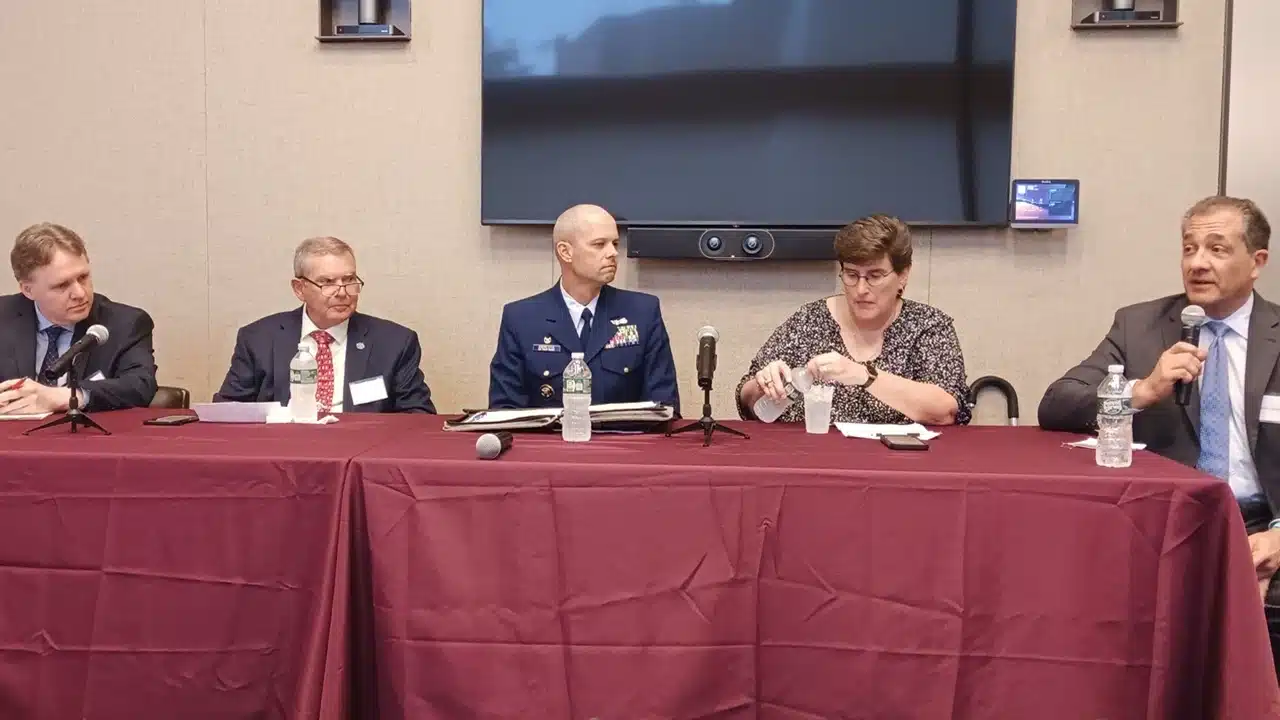Maritime Safety What if a container ship hit a bridge in New York waters?
How New York Prepares for Maritime Disasters: Lessons from Past Events

Six months after the tragic ship accident in Baltimore involving the vessel Dali, top executives in New York have been thinking about what would happen if a similar disaster struck the harbor of New York City.
To discuss the issue, New York Maritime (NYMAR) and the Port of New York and New Jersey’s chapter of the Propeller Club hosted a special meeting. The meeting took place at the offices of the Seward & Kissel law firm and was led by Chris Aversano, known for his popular podcast “Last Dinosaur.” The event focused on how New York is preparing to handle unexpected maritime disasters and what safety measures are currently in place to protect the city’s busy waterfront.
Beth Rooney, who is in charge of maritime activities at the Port Authority of New York and New Jersey (PANYNJ), said, “No matter how prepared you think you are, there’s always more you can do.” She explained that the Dali incident had made them rethink their existing plans and protocols for emergencies.
Year-to-date product tanker newbuild contracting hits 10-year high
Rooney gave an example from the Baltimore disaster: right before the crash, a local ship pilot called the staff at the nearby Key Bridge. Thanks to that call, they were able to close the bridge to cars, preventing many deaths. To ensure that something similar could happen in New York, PANYNJ staff now makes sure ship pilots have the contact information for all the bridges in the port area. They also make sure that the people who monitor ship traffic on the radio are trained to handle emergencies, which wasn’t always part of their job before.
Captain Jonathan Andrechik, the head of the US Coast Guard in New York, was also part of the discussion. He talked about how the Coast Guard is working to improve safety in ports around the country. He mentioned that in May 2024, the Coast Guard held a special meeting to study port safety, especially with the growing number of ships visiting major US ports. This effort focuses on 11 high-risk ports, including New York, and involves talking with local leaders about the dangers surrounding their ports.
Rooney also mentioned how cofferdams (structures built to protect bridge supports from being hit by ships) have been effective so far. She pointed out the Outerbridge Crossing, a bridge located at the entrance to a busy shipping channel, as one such example. However, she noted that with bigger ships, some carrying up to 16,000 containers, it’s now necessary to recheck the strength of these structures. Engineers are currently analyzing all the bridges in the port to ensure they can handle the larger ships.
In addition to planned measures, the panelists talked about the importance of quick responses during disasters. They referred to the 9/11 attacks when New York saw a massive rescue effort by boats, called “The BoatLift,” and the “Miracle on the Hudson” in 2009, when a plane crash-landed in the river. In both cases, nearby ships and boats helped save lives by quickly coming to the rescue.
By constantly reviewing safety plans, ensuring good communication between key players, and learning from past disasters, New York is working hard to protect its harbor from future maritime accidents.
